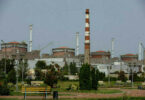JUDY DEMPSEY
Europe will have to juggle environmental concerns, access to resources, and the Arctic’s growing geostrategic role. This will require cooperation with all the major players, including China, if the region is to remain stable and peaceful.
CARL BILDT CO-CHAIR OF THE EUROPEAN COUNCIL ON FOREIGN RELATIONS
I wouldn’t call it a headache, but it is an area where all sides have to be increasingly careful in the years to come. The Arctic is still a low-tension region in which the Arctic Council provides a framework for cooperation, including with Russia. It is important to stress the value of keeping that framework, since it is firmly based on respect for international law.
The security concerns that are sometimes raised are often overblown. The new military positions Russia has opened up on some islands north of Siberia are more of a possible threat to polar bears than to anything else. The long-term political future of Greenland, however, is an issue to be watched, although I don’t see any change coming soon.
The Northern Sea Route will slowly gain importance as primarily East Asian nations are keen to tap the oil and gas reserves of the Russian Arctic. The Vostok project, which brings together several activities in the Russian Far North, is probably the largest hydrocarbon project in the world today, and that has numerous implications.
BEN HODGES PERSHING CHAIR IN STRATEGIC STUDIES AT THE CENTER FOR EUROPEAN POLICY ANALYSIS
Yes, the Arctic is becoming a major headache. Unlike a normal headache that goes away after an aspirin, this one is here to stay for the next century. The Kremlin’s militarization of the Arctic, including its demands for control over the northern transit routes between the Pacific and the Atlantic and its claims to access to parts of Norway’s Svalbard islands, shows no signs of abatement.
The Chinese government is also showing increasing interest in the region. The largest embassy in Iceland is China’s—and that’s not because the Chinese have developed a taste for Icelandic cod.
Denmark sees the challenges in the region. It is deploying two long-range unmanned aerial systems to Greenland and reestablishing its Cold War radar station on the Faeroe Islands because of Russian Navy activity in the Greenland-Iceland–United Kingdom (GIUK) gap.
A senior Norwegian official told me his biggest concern was a Russian seizure of the north of Norway, which is typically cut off on the maps one finds on the wall in NATO headquarters. A Russian seizure of that part of Norway would give Moscow control of the GIUK gap, through which Russian submarines must pass to reach the Atlantic.
Pass me the aspirin!
JUHA JOKELA DIRECTOR OF THE EUROPEAN UNION PROGRAM AT THE FINNISH INSTITUTE OF INTERNATIONAL AFFAIRS
There is at least the potential for a headache.
In the seemingly calm political landscape of the Arctic, some increasingly worrying trends have emerged. Although cooperation between the West and Russia has continued on the management of the Arctic’s environmental transformation and economic potential, ongoing military developments in the region point in the opposite direction.
It would be naive to assume that the Arctic is immune to increased geopolitical and geoeconomic rivalry among great powers, or to disputes and conflicts elsewhere. While policymakers, military planners, and analysts should take these trends seriously, they should pay equally serious attention to incentives for continuing cooperation on Arctic matters.
The new U.S. administration’s climate policies are likely to provide opportunities for Europe to push for ambitious initiatives to manage the Arctic’s environmental transformation and risks related to the increasing economic activity in the region. To build up mutual trust, European Arctic actors should aim to give—and demand from others—assurances that military assets in the Arctic create stability. Any such assets must also be crucial to civilian safety and provide credible policing of borders and illegal migration flows.
OLIVIA LAZARD VISITING SCHOLAR AT CARNEGIE EUROPE
The EU has just closed a public consultation on its Arctic policy. This exercise demonstrates that the union is actively thinking about the future of the region, which is warming twice as fast as the rest of the world and experiencing rapid territorial change.
The EU’s headache in the Arctic is twofold. First, the EU sees in the Arctic an opportunity to diversify its supply chains for raw materials that are essential to the union’s transition. This has become a high priority in industrial, security, and strategic terms for the EU in light of its looming dependence on China. Yet, extractive ventures in the Arctic will have severe repercussions on the environmental integrity of the Arctic biome.
Second, melting in the Arctic entails a geostrategic recasting of territories and interests, with tense competition between Russia, China, and the United States. This competition will compound environmental risks further, although Russia and China care little about them.
The EU’s highest goal should be to protect the environmental integrity of the Arctic, but geopolitical and geoeconomic concerns are priming over this imperative. An EU Arctic policy should be robustly multidimensional: work with indigenous communities to support their legal rights to protection, empower these communities to protect their direct environment, and cooperate with the United States for a treaty-based approach toward the region. At the same time, the EU needs to start rebuilding its deterrence abilities.
STEN RYNNING PROFESSOR OF POLITICAL SCIENCE AND PUBLIC MANAGEMENT AT THE UNIVERSITY OF SOUTHERN DENMARK
Europe is waking up to an Arctic headache principally because the United States and Russia are set on a competitive course in the region and Europeans do not know what to do about it.
U.S.-Russian posturing in the Arctic is driven not by climate change—melting ice—but by their wider conflicts of interests. In the Arctic, the United States and Russia test the limits of their national defense boundaries: approaches to North American airspace and Russia’s Barents Sea bastion defense of second-strike capabilities. China’s steady entry into the region will only complicate matters.
For allies to calm such great-power conflicts of interests is a tall order; when allies are divided, it is next to impossible. The most affected northern European countries prefer to keep the Arctic at a level of low-intensity competition, but they lack both a compass—by dithering on whether to involve NATO in the region—and resources—by de facto outsourcing security to the United States. Other European countries do not take enough interest to set aside other priorities.
NATO’s North is thus becoming its new South: critical but politically fraught, and with great powers in the driver’s seat.
DMITRI TRENIN DIRECTOR OF THE CARNEGIE MOSCOW CENTER
Since 2014, Russia’s confrontation with NATO has been intensifying from the Barents Sea to the Baltic to the Black Sea. Confrontation has also extended to NATO candidate countries Georgia and Ukraine. Moldova is moving closer to these two. Formerly neutral states, like Finland and Sweden, have become close security partners of NATO and the United States.
The Arctic, with its harsh climate, has long been touted as a region of relative stability and peaceful cooperation. Unfortunately, this may not hold for much longer. In the environment of renewed confrontation, Russia, which faces the United States and its allies in the region, is fortifying its northern facade. In turn, NATO allies are holding war games close to the main base of the Russian Northern Fleet, a key instrument of Moscow’s nuclear deterrence strategy.
In May 2021, Russia assumes the two-year presidency of the Arctic Council, which brings together five littoral and three neighboring states. For years, this body has been a platform of regional cooperation shielded from its members’ growing differences elsewhere. Border issues, including disputes over boundaries of exclusive economic zones, were resolved diplomatically.
Looking ahead, climate change, environmental protection, and the opening of sea-lanes for commercial navigation require international cooperation. To make this possible, confidence-building measures in the Arctic are in order.
ANNA WIESLANDER DIRECTOR FOR NORTHERN EUROPE AT THE ATLANTIC COUNCIL
As the effects of climate change are hitting the Arctic at a rate of twice the global average, Europe must urgently put the spotlight on this remote, cold, and sparsely populated region.
After the Cold War, the Arctic was characterized by exceptionalism: a region with zero political tensions that served as a benchmark for international cooperation. This period has come to an end. Russia is remilitarizing in the Arctic and pledging its regional superiority. China is investing in research, infrastructure, icebreakers, and energy facilities with an eye toward a future of open sea lines and more accessible natural resources. The United States, which for many years turned its gaze elsewhere, has only recently woken up to this new reality and is now adapting its posture.
The appearance of great-power competition in the Arctic means that conflicts arising in the region could easily have more widespread consequences, and vice versa. Although the Arctic Council, which comprises Canada, Denmark, Finland, Iceland, Norway, Russia, Sweden, and the United States, still functions well, it is limited in scope. It does not deal with hard security.
Europe can be neither naive nor passive. The EU needs to increase its Arctic engagement and should push for observer status in the Arctic Council, something that China has already achieved. NATO cannot hand over the Arctic to a few member states; rather, the alliance should serve as the anchor for a coherent Western security posture on the region by fostering dialogue and cooperation with Russia and China—but only if backed up by strong deterrence and defense.
Courtesy: (carnegieeurope.eu)






